Optical Spectral Approach to Breast Tissue Oxygen Saturation Analysis for Mastectomy Perioperative Control
Abstract
1. Introduction
2. Materials and Methods
2.1. Spectroscopic Setup
2.2. Optical Phantoms
2.3. Clinical Study
3. Results and Discussion
3.1. Determining the Depth of Probing the Studied Tissues with Light
3.2. Changes in the Saturation of Breast Tissue
4. Conclusions
Author Contributions
Funding
Institutional Review Board Statement
Informed Consent Statement
Data Availability Statement
Conflicts of Interest
References
- Ahmad, A. Breast Cancer Metastasis and Drug Resistance: Challenges and Progress; Springer: Berlin/Heidelberg, Germany, 2019; Volume 1152. [Google Scholar]
- Rizvi, F.H.; Khan, M.K.; Almas, T.; Ullah, M.; Shafi, A.; Murad, M.F.; Ali, A.; Nadeem, F. Early Postoperative Outcomes after Surgery for Breast Cancer in a Developing Country. Cureus 2020, 12, e9941. [Google Scholar] [PubMed]
- Qin, Q.; Tan, Q.; Lian, B.; Mo, Q.; Huang, Z.; Wei, C. Postoperative outcomes of breast reconstruction after mastectomy: A retrospective study. Medicine 2018, 97, e9766. [Google Scholar] [CrossRef] [PubMed]
- Davies, K.; Allan, L.; Roblin, P.; Ross, D.; Farhadi, J. Factors affecting post-operative complications following skin sparing mastectomy with immediate breast reconstruction. Breast 2011, 20, 21–25. [Google Scholar] [CrossRef] [PubMed]
- Vitug, A.F.; Newman, L.A. Complications in breast surgery. Surg. Clin. N. Am. 2007, 87, 431–451. [Google Scholar] [CrossRef] [PubMed]
- Grobmyer, S.R.; Bland, K.I. Wound Care and Complications of Mastectomy. In The Breast; Elsevier: Amsterdam, The Netherlands, 2018; pp. 492–498. [Google Scholar]
- Surwit, E.; Tam, T. Postoperative Care; The Global Library of Womens Medicine: Carlisle, UK, 2008. [Google Scholar]
- Trop, I. Is There a Role for Imaging Surveillance after Mastectomy and Autologous Breast Reconstruction? Radiology 2018, 289, 49–55. [Google Scholar] [CrossRef] [PubMed]
- Graham, L.J.; Shupe, M.P.; Schneble, E.J.; Flynt, F.L.; Clemenshaw, M.N.; Kirkpatrick, A.D.; Gallagher, C.; Nissan, A.; Henry, L.; Stojadinovic, A.; et al. Current approaches and challenges in monitoring treatment responses in breast cancer. J. Cancer 2014, 5, 58. [Google Scholar] [CrossRef] [PubMed]
- Murthy, B.L.; Thomson, C.S.; Dodwell, D.; Shenoy, H.; Mikeljevic, J.S.; Forman, D.; Horgan, K. Postoperative wound complications and systemic recurrence in breast cancer. Br. J. Cancer 2007, 97, 1211–1217. [Google Scholar] [CrossRef] [PubMed]
- Pruimboom, T.; van Kuijk, S.M.; Qiu, S.S.; van den Bos, J.; Wieringa, F.P.; van der Hulst, R.R.; Schols, R.M. Optimizing indocyanine green fluorescence angiography in reconstructive flap surgery: A systematic review and ex vivi experiments. Surg. Innov. 2020, 27, 103–119. [Google Scholar] [CrossRef] [PubMed]
- Kühn, F.; Blohmer, J.U.; Karsten, M.M. Intraoperative indocyanine green fluorescence imaging in breast surgery. Arch. Gynecol. Obstet. 2020, 302, 463–472. [Google Scholar] [CrossRef] [PubMed]
- Kohler, L.H.; Köhler, H.; Kohler, S.; Langer, S.; Nuwayhid, R.; Gockel, I.; Spindler, N.; Osterhoff, G. Hyperspectral Imaging (HSI) as a new diagnostic tool in free flap monitoring for soft tissue reconstruction: A proof of concept study. BMC Surg. 2021, 21, 1–9. [Google Scholar] [CrossRef] [PubMed]
- Pruimboom, T.; Lindelauf, A.A.; Felli, E.; Sawor, J.H.; Deliaert, A.E.; van der Hulst, R.R.; Al-Taher, M.; Diana, M.; Schols, R.M. Perioperative Hyperspectral Imaging to Assess Mastectomy Skin Flap and DIEP Flap Perfusion in Immediate Autologous Breast Reconstruction: A Pilot Study. Diagnostics 2022, 12, 184. [Google Scholar] [CrossRef] [PubMed]
- Rao, R.; Saint-Cyr, M.; Ma, A.M.T.; Bowling, M.; Hatef, D.A.; Andrews, V.; Xie, X.J.; Zogakis, T.; Rohrich, R. Prediction of post-operative necrosis after mastectomy: A pilot study utilizing optical diffusion imaging spectroscopy. World J. Surg. Oncol. 2009, 7, 1–6. [Google Scholar] [CrossRef] [PubMed]
- Lindelauf, A.A.; Vranken, N.; Schols, R.M.; Bouman, E.A.; Weerwind, P.W.; van der Hulst, R.R. Exploring personalized postoperative non-invasive tissue oximetry in DIEP flap breast reconstruction. Eur. J. Plast. Surg. 2021, 45, 267–275. [Google Scholar] [CrossRef]
- Salgarello, M.; Pagliara, D.; Rossi, M.; Visconti, G.; Barone-Adesi, L. Postoperative monitoring of free DIEP flap in breast reconstruction with near-infrared spectroscopy: Variables affecting the regional oxygen saturation. J. Reconstr. Microsurg. 2018, 34, 383–388. [Google Scholar] [CrossRef] [PubMed]
- Bashkatov, A.N.; Genina, E.A.; Kochubey, V.I.; Tuchin, V.V. Optical properties of human skin, subcutaneous and mucous tissues in the wavelength range from 400 to 2000 nm. J. Phys. D Appl. Phys. 2005, 38, 2543. [Google Scholar] [CrossRef]
- Fanjul-Vélez, F.; Arévalo-Díaz, L.; Arce-Diego, J.L. Intra-class variability in diffuse reflectance spectroscopy: Application to porcine adipose tissue. Biomed. Opt. Express 2018, 9, 2297–2303. [Google Scholar] [CrossRef] [PubMed]
- Prahl, S. Optical Absorption of Hemoglobin. 1999. Available online: https://omlc.org/spectra/hemoglobin/ (accessed on 20 October 2022).
- Kholodtsova, M.N.; Grachev, P.V.; Savelieva, T.A.; Kalyagina, N.A.; Blondel, W.; Loschenov, V.B. Scattered and fluorescent photon track reconstruction in a biological tissue. Int. J. Photoenergy 2014, 2014, 517510. [Google Scholar] [CrossRef]
- Kustov, D.M.; Savelieva, T.A.; Mironov, T.A.; Kharnas, S.S.; Levkin, V.V.; Gorbunov, A.S.; Shiryaev, A.A.; Loschenov, V.B. Intraoperative Control of Hemoglobin Oxygen Saturation in the Intestinal Wall during Anastomosis Surgery. Photonics 2021, 8, 427. [Google Scholar] [CrossRef]
- Stroev, V.M.; Almas, H.F. Multispectral method for detecting subcutaneous formations. Young Sci. Conf. 2012, 12, 104–107. [Google Scholar]
- Oltulu, P.; Ince, B.; Kokbudak, N.; Findik, S.; Kilinc, F. Measurement of epidermis, dermis, and total skin thicknesses from six different body regions with a new ethical histometric technique. Turk. J. Plast. Surg. 2018, 26, 56. [Google Scholar]
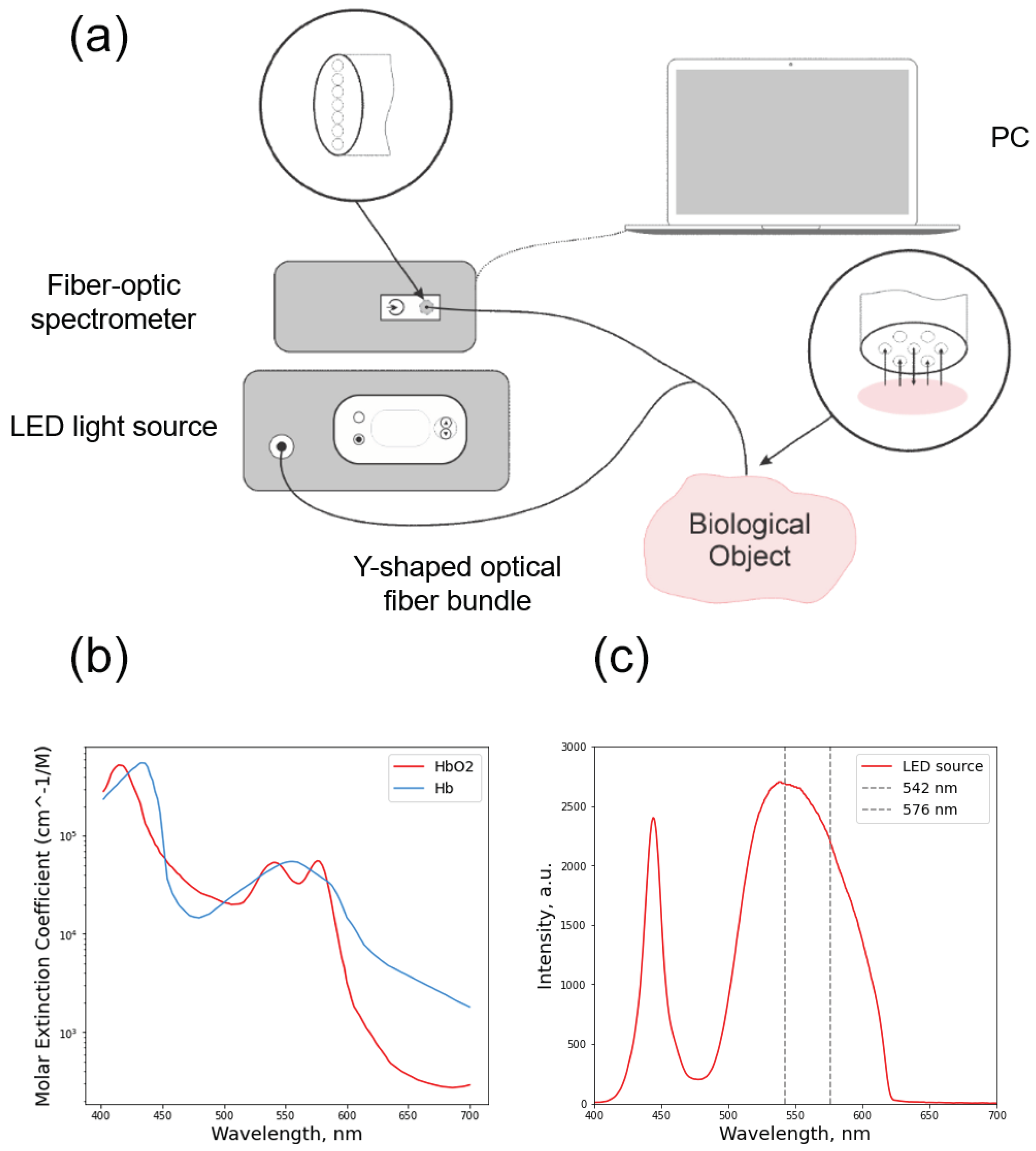
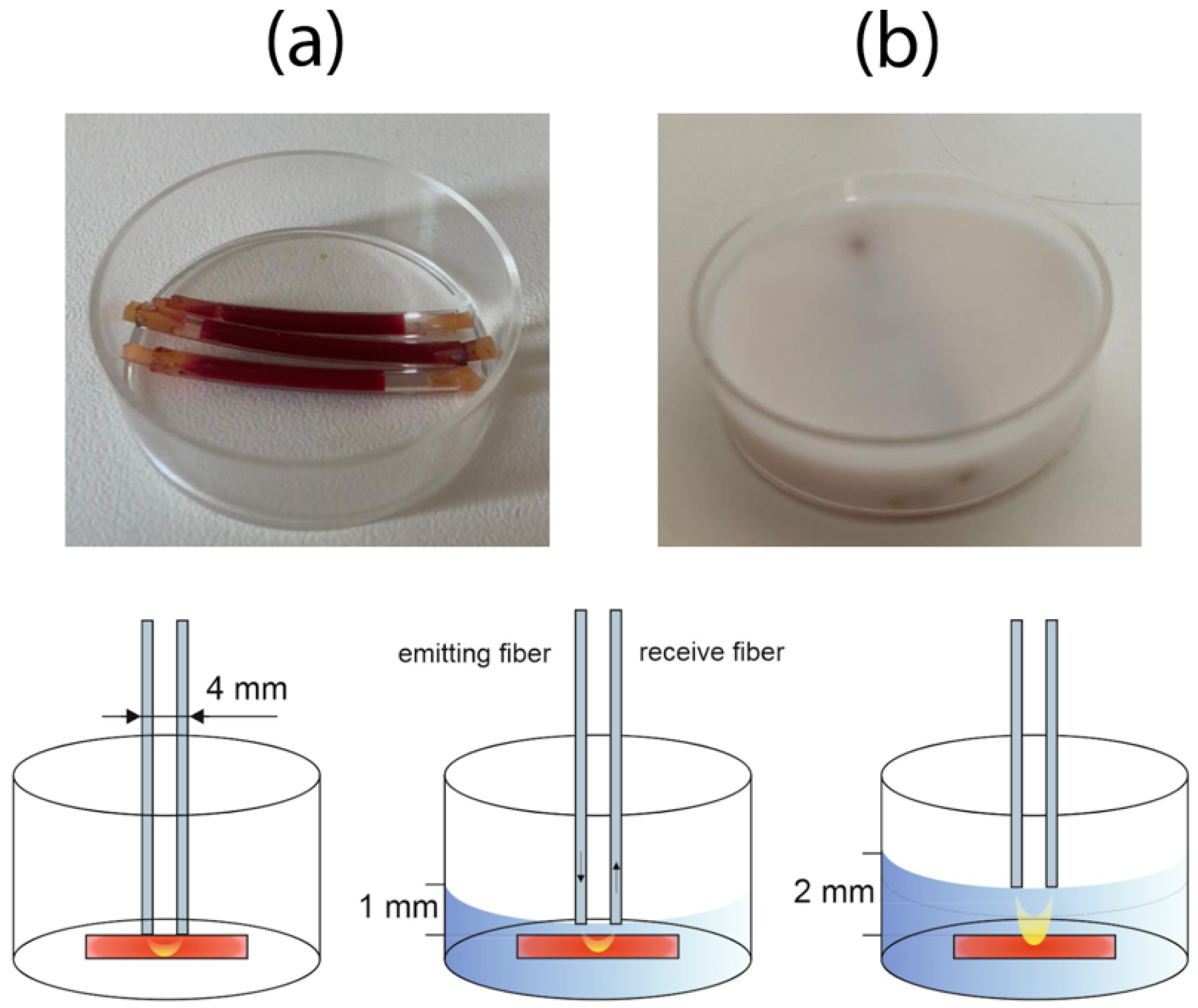
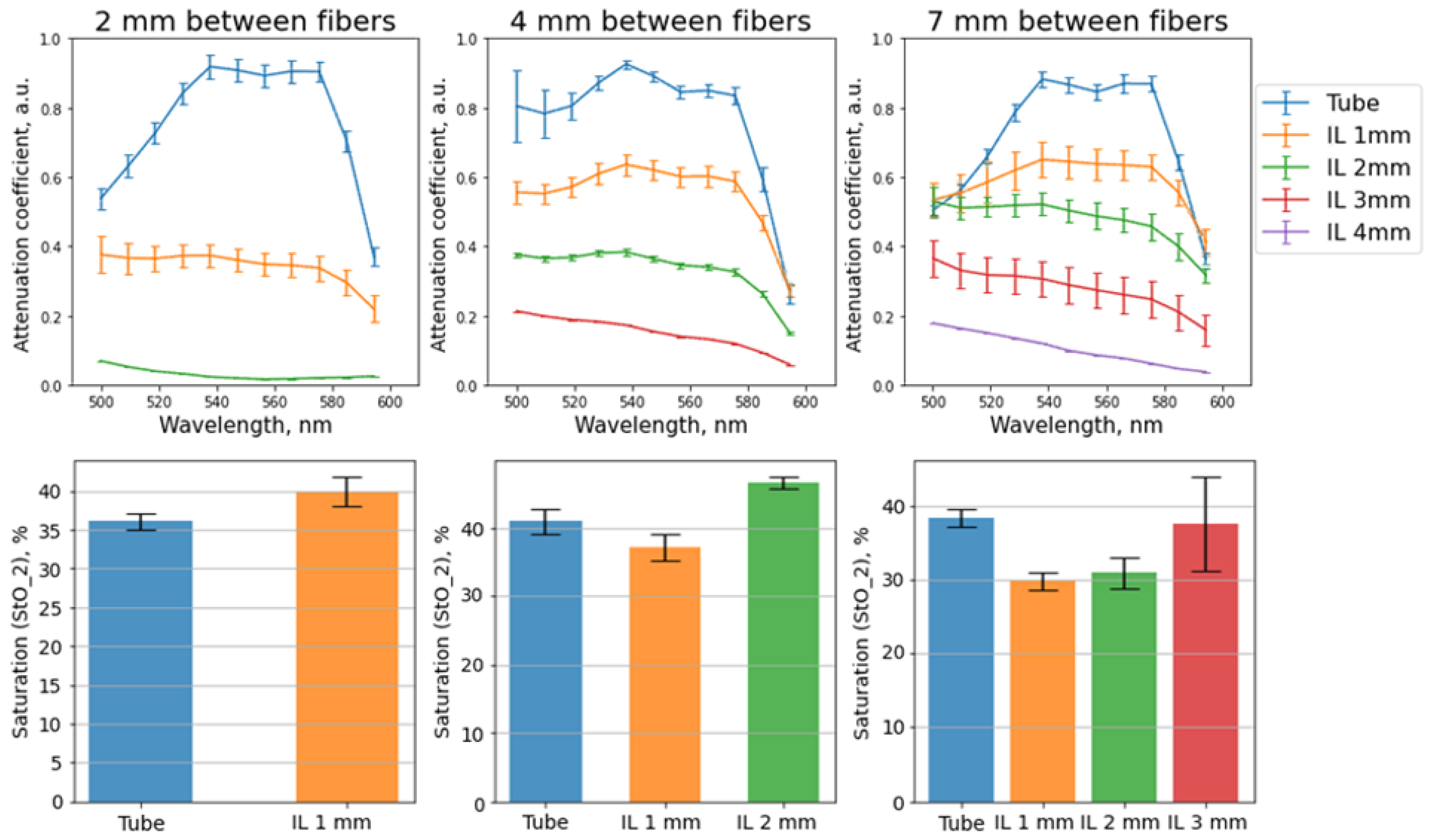

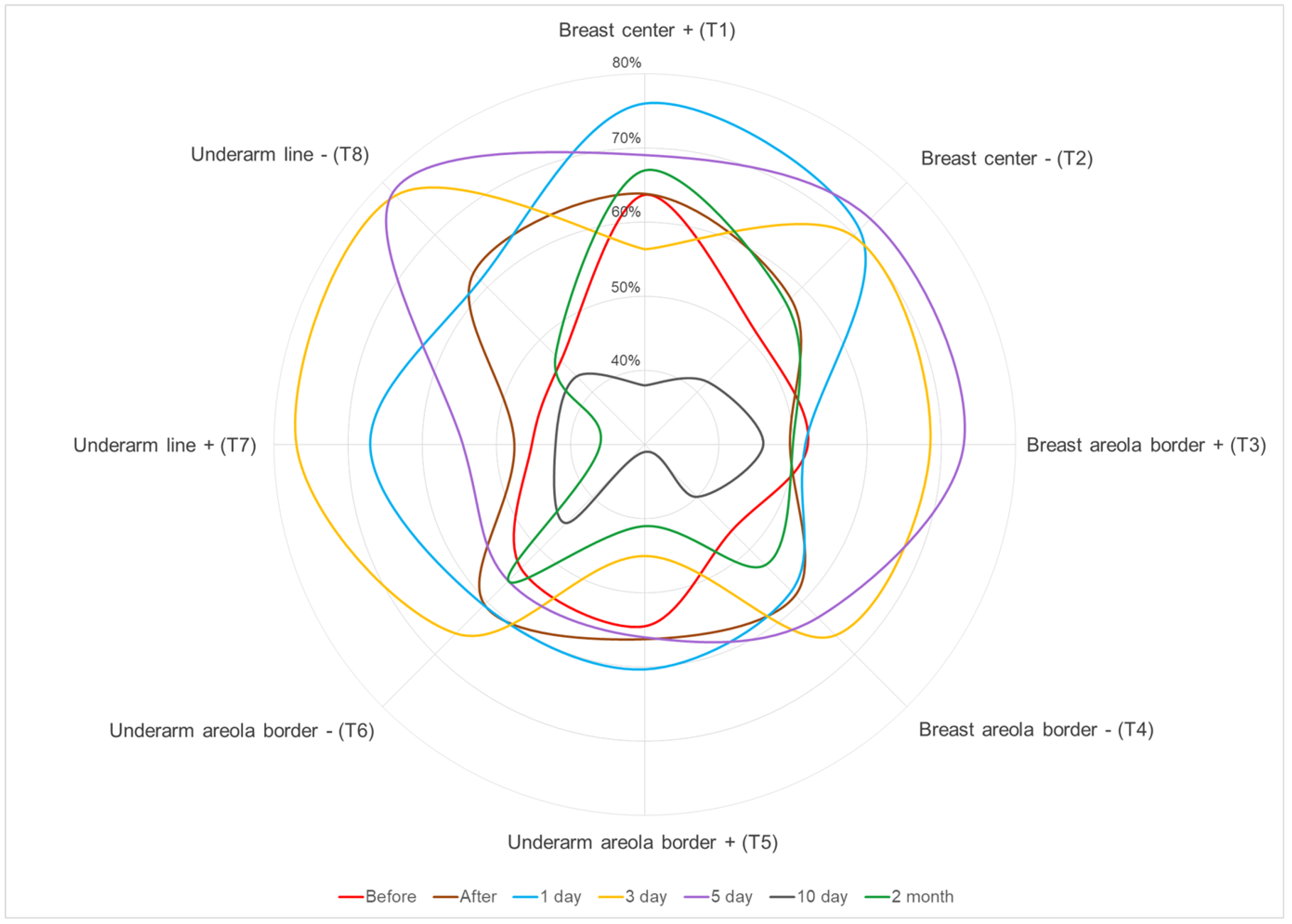

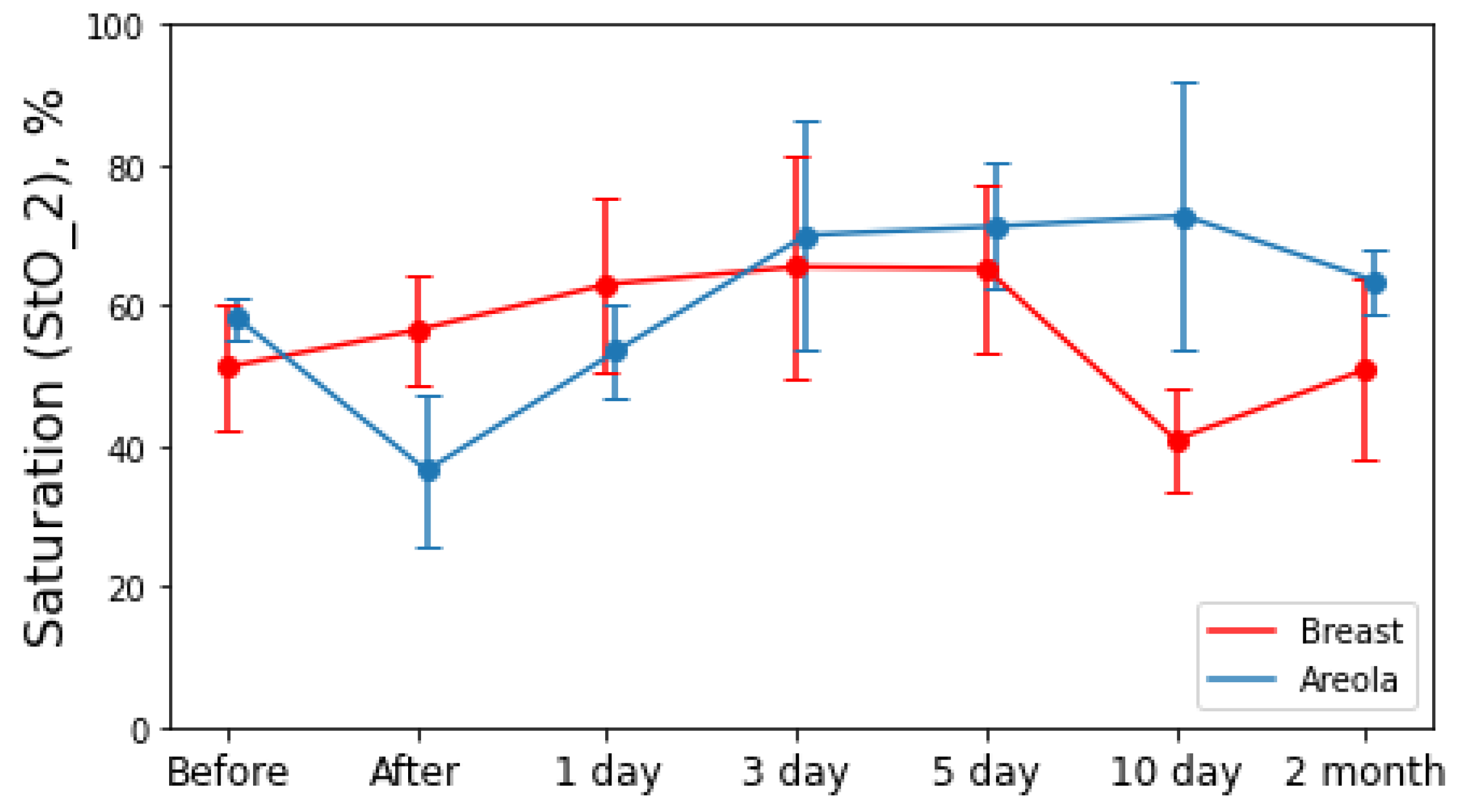
| Before | After | 1 Day | 3 Day | 5 Day | 10 Day | 2 Month | |
|---|---|---|---|---|---|---|---|
| Before | – | ||||||
| After | 34 | – | |||||
| 1 day | 33 | 12 | – | ||||
| 3 day | 18 | 6 | 20 | – | |||
| 5 day | 0 | 11 | 19 | 28 | – | ||
| 10 day | 36 | 36 | 36 | 12 | 4 | – | |
| 2 month | 15 | 32 | 33 | 22 | 9 | 28 | – |
Publisher’s Note: MDPI stays neutral with regard to jurisdictional claims in published maps and institutional affiliations. |
© 2022 by the authors. Licensee MDPI, Basel, Switzerland. This article is an open access article distributed under the terms and conditions of the Creative Commons Attribution (CC BY) license (https://creativecommons.org/licenses/by/4.0/).
Share and Cite
Kustov, D.M.; Krivetskaya, A.A.; Savelieva, T.A.; Gorbunov, A.S.; Kashirina, E.P.; Kharnas, S.S.; Levkin, V.V.; Krasnovsky, V.I.; Anosova, E.Y.; Momatiuk, D.V.; et al. Optical Spectral Approach to Breast Tissue Oxygen Saturation Analysis for Mastectomy Perioperative Control. Photonics 2022, 9, 821. https://doi.org/10.3390/photonics9110821
Kustov DM, Krivetskaya AA, Savelieva TA, Gorbunov AS, Kashirina EP, Kharnas SS, Levkin VV, Krasnovsky VI, Anosova EY, Momatiuk DV, et al. Optical Spectral Approach to Breast Tissue Oxygen Saturation Analysis for Mastectomy Perioperative Control. Photonics. 2022; 9(11):821. https://doi.org/10.3390/photonics9110821
Chicago/Turabian StyleKustov, Daniil M., Anna A. Krivetskaya, Tatiana A. Savelieva, Andrey S. Gorbunov, Elena P. Kashirina, Sergey S. Kharnas, Vladimir V. Levkin, Vitaly I. Krasnovsky, Ekaterina Yu. Anosova, Daria V. Momatiuk, and et al. 2022. "Optical Spectral Approach to Breast Tissue Oxygen Saturation Analysis for Mastectomy Perioperative Control" Photonics 9, no. 11: 821. https://doi.org/10.3390/photonics9110821
APA StyleKustov, D. M., Krivetskaya, A. A., Savelieva, T. A., Gorbunov, A. S., Kashirina, E. P., Kharnas, S. S., Levkin, V. V., Krasnovsky, V. I., Anosova, E. Y., Momatiuk, D. V., Ibragimov, R. S., & Loschenov, V. B. (2022). Optical Spectral Approach to Breast Tissue Oxygen Saturation Analysis for Mastectomy Perioperative Control. Photonics, 9(11), 821. https://doi.org/10.3390/photonics9110821







